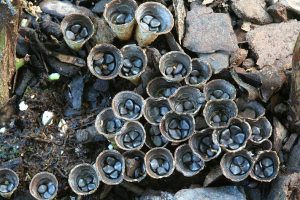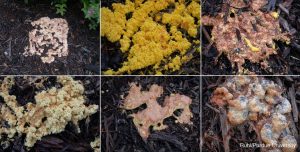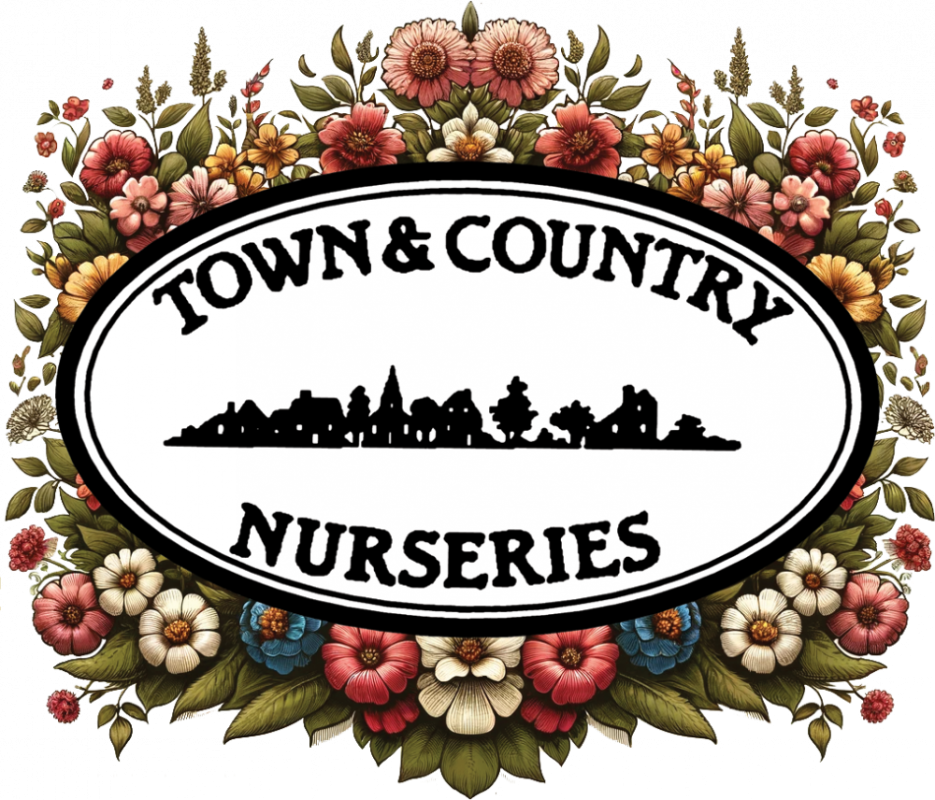 Aside from their decorative value, mulches offer many benefits to your soil and plants. Mulch reduces the amount of water lost through evaporation by shielding the soil from the sun’s drying rays. It keeps the soil cooler during the summer and acts as an insulator through the cold winter months lessening the effects of fluctuating temperatures on plant roots which in turn decreases their susceptibility to frost heaving. Organic matter is added to the soil as the mulch breaks down. Increasing the soil organic matter will improve a soil’s moisture and nutrient holding capacity, structure, and drainage. Mulch also encourages the activity of beneficial soil organisms, Weed growth is suppressed by the use of a mulch as is the spread of some plant diseases. Mulched plots are also less prone to erosion.
Aside from their decorative value, mulches offer many benefits to your soil and plants. Mulch reduces the amount of water lost through evaporation by shielding the soil from the sun’s drying rays. It keeps the soil cooler during the summer and acts as an insulator through the cold winter months lessening the effects of fluctuating temperatures on plant roots which in turn decreases their susceptibility to frost heaving. Organic matter is added to the soil as the mulch breaks down. Increasing the soil organic matter will improve a soil’s moisture and nutrient holding capacity, structure, and drainage. Mulch also encourages the activity of beneficial soil organisms, Weed growth is suppressed by the use of a mulch as is the spread of some plant diseases. Mulched plots are also less prone to erosion.
Tips for Applying Mulch
- Do not place mulch directly against plant crowns or tree bases. Mulch placed directly on contact with stems or tree trunks may retain excess moisture around the base of the plant that can favor the development of diseases like crown rot. Mulch piled around plants may also serve as lodging for bark and stem eating rodents.

- Mulch applied too thickly can cause problems. Mulch to deeply can cause the soil to remain continuously wet contributing to root and stem rot problems in addition to depriving plants of needed oxygen. Apply a mulch layer no more than 1 to 3 inches thick.
- Thoroughly water newly installed wood or bark mulches. Many good quality mulches are stored in large piles that reach high temperatures. When the mulch is spread or bagged, the high-temperature tolerant microorganisms that inhabit the mulch die as the mulch cools. If the mulch is allowed to dry out or remain dry, nuisance fungi can colonize the mulch and create a water-repellent surface.
- Add a source of nitrogen to garden soils before applying wood-derived mulches. Soil microorganisms that decompose organic materials such as wood-based mulches are effective competitors for limited soil nitrogen. This may cause temporary nitrogen deficiencies especially in annual and perennial plants. Yellowing of leaves often indicate a nitrogen deficiency. Lightly incorporate a source of nitrogen such as blood meal, urea, or a high nitrogen lawn fertilizer before applying mulch.
Common Mulch Problems
- ARTILLERY FUNGUS- Tiny, cream, or orange-brown fruiting structures shaped like cups contain a small black spore mass are called artillery fungus. The fungus “shoots” the spore mass into the air and it sticks to any surface it hits. The small black spots will be visible on plant leaves and/or home siding, and they are very difficult to remove.

ARTILLERY FUNGUS
- SLIME MOLDS- Slime Molds are bright yellow or orange slimy masses reaching a foot ore more in diameter. They produce tiny spores, which eventually will dry and blow away. These molds are not a serious problem and can be considered a decorative addition to the landscape. Remove them if you find their appearance undesirable.

- SOUR MULCH- If a mulch smells like alcohol, vinegar, ammonia or sulfur it is probably “sour.” The smell is created when a wood-derived mulch is piled high and the inside portion of the pile is deprived of oxygen. This causes anaerobic activity, which creates a build-up of acetic acid in the mulch. The build-up is toxic to plants and if the mulch is spread on the landscape without treatment, the volatile acid will quickly cause plants to wilt and subsequently die. Sour mulch can be treated by spreading it out thinly, soaking it with water, and allowing it to dry. After a few days of airing out, the smell should be gone and the mulch is safe to spread around plants. CLICK HERE To Read More About Sour Mulch
- RECYCLED WOOD PRODUCT MULCH- Some companies recycle discarded wood and wood-based products by shredding them and adding a coloring agent to make them appear suitable for use in the landscape. These commercially produced mulches may decompose faster than natural bark mulches and may contain undesirable substances for use in vegetable gardens and children’s play area.
Information provided by Connecticut Nursery & Landscape Association
